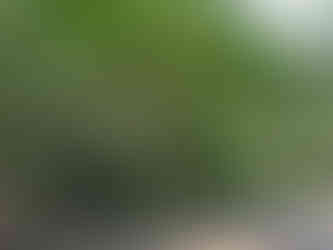July 2024 - opaskowipisim (Feathers Moulting Moon)
- Laura Woodman

- Jul 26, 2024
- 6 min read
Updated: Jul 27, 2024
Welcome to the fourth post of my 13 Grandmother Moons journey! Greenery and fresh new life is filling my special place.

Summer is a very enjoyable season to visit my place of land-based learning in the Mill Creek Ravine. Bird chirps and calls fill the air, leaves of all sizes and shades of green are spreading out around me, and brightly colored flowers are gracing many plants. Though Edmonton is experiencing intense heat, and yesterday the skies were filled with smoke from wildfires, the air here is cooler and the living and nonliving elements are thriving.
As I walk down the path and enter the place where I am engaged in land-based learning, many things are being communicated to me. Feelings of joy, peace, calm, and a sense of resilience wash over me as I stand by the little creek and watch the water and leaves move in the warm air. The promise of spring has been fulfilled, and there is less sense of urgency here now. When the ground first started to thaw there was intense energy and almost impatience as new plants pushed through the soil. There was also uncertainty - which plants will return, and which were too weak or old to survive the winter? How many new seeds will germinate, and where? Now, the urgency and intense energy of spring has receded.

I am perceiving peace, joy, calm, and resilience with my skin, eyes, ears, and soul. These feelings are being communicated to me with the movements of the plants and water - no longer rushing or quickly fluttering, they look more grounded, graceful, and solid: their place has been established. Though birds are actively calling to each other, their energy is less intense. It has shifted from frantic determination to find food or attract a mate to the business of nurturing the next generation. The plants do not seem to be rushing to establish their roots and unfurl their leaves, but rather are sunbathing in relaxation on this warm, calm day. Some flowers have begun to form seeds or berries, while others are just emerging.
This week I had the pleasure of picking some of the first saskatoons of the season, which is a summer activity that I first experienced as a very young child with my mother every year and now embark on with my three children in tow. I love eating saskatoons right from the bush, with yogurt or cottage cheese, and of course in pie! The Cree name for Saskatoon is misâskwatômina, and they have been a keystone species for many Indigenous peoples over hundreds of years. Saskatoon berries are so valuable that they have been used as a trade item, and the wood of these plants has been used to make arrow shafts, spears, canoe frames, baskets, and more. I am quite familiar with what Saskatoon shrubs and berries look like, as shown in the middle and left below, but less certain of what the red berries are - Nanking cherries, or maybe highbush cranberries? After I returned home, I learned that this was indeed a Nanking cherry bush.
Resilience is being communicated to me in many ways here in this special place. This day, and the past 2-3 weeks, have been overwhelmingly hot, yet nothing is wilting here. The plants seem to be thriving despite the intense heat, as communicated by their happy, bright, large leaves. I also perceive resilience as it is being communicated by the trees. One tree is bent so far over that a branch rests on the ground, yet it still seems strong and stable. Another tree has fallen over due to the creek's banks eroding, but the pine needles emerging from its branches are green and fresh. I interpret this resilience in the face of harsh winters, extremely hot summers, and occasional intense wildfire smoke as strength, perseverance, and determination to thrive and survive despite adverse circumstances.
As my husband and I walked along the path back to our car, we were stopped by a couple huddled over a tiny bird. The fledgling was laying on its side, eyes shut tight, and not using its legs. After some discussion, we decided to take it into Wild North wildlife rescue based on their website recommendations. We felt it would surely die if left in the heat, and that the wildlife rescue could save it. On the short car ride home, it seemed to perk up, opening its eyes and turning its head. It declined my offer of fresh water, but did start to use its feet a little. On the way to the rescue centre it began to chirp, and almost immediately on arrival it tried to fly and hop out of the tote it was in. The little bird, a Warbling Vireo, was fine - it had been faking illness or death, which I now know that fledgling songbirds can do!
We drove right back to the ravine and encouraged it to let go of my finger and take the branch instead. At first it seemed clumsy, but after it sat on the branch for a minute it quickly and expertly flew to a different branch! It seems ironic to me that for many of the past three moons I have not directly experienced the phenomenon being named: I heard no frogs in April, and saw no eggs hatching in May. Yet for this moon, a tiny bird with freshly emerging feathers was literally delivered into my hands. I am grateful for the vast knowledge available on the internet, and to my local animal rescue for their ability to support humans "helping" nature. I was also sternly reminded of the resilience and capability that wildlife has; more often than not it seems, humans need to let it be and trust that nature can and is taking care of itself.
As always, I will attempt to express what is being communicated to me with peg dolls. I gathered a small number of items to guide my winter count symbol creation: two feathers, a flower, and a handful of greens serve as my inspiration and tools. I am also incorporating seashells gathered during my recent visit to Ucluelet and Tofino, where the ocean waves and rainforest offered a contrasting climate and experience to my life on the plans. They remind me of bird heads and wings, perfect for this Feathers Moulting moon.
I made two different sets this time: a plant set to represent the vibrant green life I experienced, and a bird set in honor of this moon and the fledgling we found. I love how the birds seem whimsical and wild; birds are amazing but sometimes give chills with their beady eyes and rapid, jerky movements. Some of the plant peg dolls are very fragile, but nature is impermanent!

My very favorite this month is the large leaf man in the middle row. It took a long time to perfect, and to me it really captures the essence of what was communicated to me this month: joy, peace, calm, and resilience.
3 ways to stay cool with children in hot summer weather
During extreme temperatures there is often heated debate (no pun intended!) on whether or not to allow children outside. In Alberta, there are no specific regulations as to what is too hot or too cold for an early childhood education program to take children outside. In general, it is best to stay cool and safe by wearing hats and sunscreen, taking shady breaks, and drinking lots of water. Avoiding the most intense heat and sun rays in the middle of the day is also recommended - luckily, that usually coincides with lunch and nap time! Below are some of my favorite ways to beat the heat and enjoy the outdoors with children in summer.
1 - Make Popsicles
I love offering children an icy cool treat on a hot summer day, and I like it even better when I can control the ingredients, including sugar and food dye, that are often found in store-bought popsicles. In the summer, I visit the library for books filled with recipes - For the Love of Popsicles and People's Pops are favorites of mine. Then, I sit with the children and we look at the pictures to choose some new recipes to try! To extend this idea, plan for a field trip to the (air-conditioned!) grocery store to purchase the ingredients.
2 - Create Shade

Hopefully your outdoor space has some shade, but if not - or if you need more - here's a couple of ideas. The first is a tent. These are more portable and often less expensive than a more permanent shade awning. The best ones have big mesh windows that can provide ventilation and supervision. It would also be fun to fill it with sand and have an instant sandpit! The second is a beanpole tepee. I adore these, and use them in my children's garden almost every year. They grow big and fast, provide food, and offer a cool spot to gather on a hot summer's day. This does take some planning ahead; the May long weekend is the best time to plant beans in Alberta.
3 - Play with Water!
The possibilities for water play are nearly endless. You can set up a sprinkler, or make one by attaching an empty pop bottle poked with holes to the garden hose. You can fill a container with water and add buckets, scoops, ladles, and sieves. If your yard is big enough, you can try a slip and slide, and if the children are all above age 3 you can play with water balloons or spray toys. Whatever it takes to beat the heat will do the trick!
























































Comments